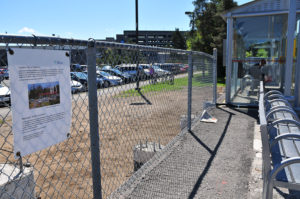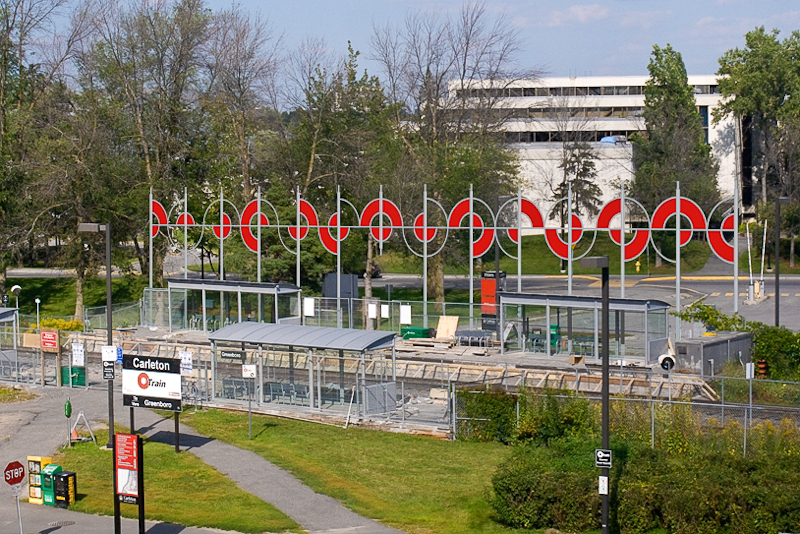Students taking the O-Train to campus can expect to see a mixture of art and architecture gracing the Carleton platform by the end of September.
The artist behind the new installation, entitled locomOtion, is Stuart Kinmond.
The foundations for the installation are currently in place, while the installation itself will be happening in two to three weeks, he said. The installation is currently underway and is more than 50 per cent complete, according to Kinmond.
This is the first public art commission for Kinmond, an architect-turned-visual artist who has been showing his work since 2000.
“I started out in life as an architect and then I switched over to doing art about 15 years ago,” he said.
The design itself is inspired by travel and movement and expresses the idea of motion and spinning wheels, he said.
“I wanted to do something that was sort of deconstructed and had a sense of movement with the different partial panels,” he said.
“The panels themselves are covered with reflective sheeting that’s very, very bright and really highly reflective. It’s the same material that they use on stop signs, so any light that comes onto it at nighttime will reflect itself and sort of animate the piece. It also acts as a bit of a beacon at night.”
The use of red in the installation is partly inspired by the O-Train logo, which Kinmond said looks like a red doughnut.
The installation is made up of 12 masts measuring about seven metres high with double circles at the top. The design made
Kinmond the winner of the public art competition that was part of the O-Train expansion project.
“There’s a two-part call for proposals from artists, and the first part is just really an expression of interest, and then the second part they ask for proposals of specific designs, so that’s how I got into it,” he said.
Artists were given the option to propose where they wanted to put their work. Kinmond said there’s a specific reason the installation is at the Carleton stop.
“I thought the Carleton one was the right one because it has the most ridership. It’s the busiest station of the whole line and everybody that goes from one end to the other would see the work if it’s at Carleton,” said Kinmond.
He said he wants to make the station which currently isn’t very noticeable more, visible.
“The piece is over 100 feet long and it’s the same length as the platform, so it sort of draws your attention to where the platform is and it gives the actual station a sense of place and will be quite visible from different parts of the campus as well,” he said.







